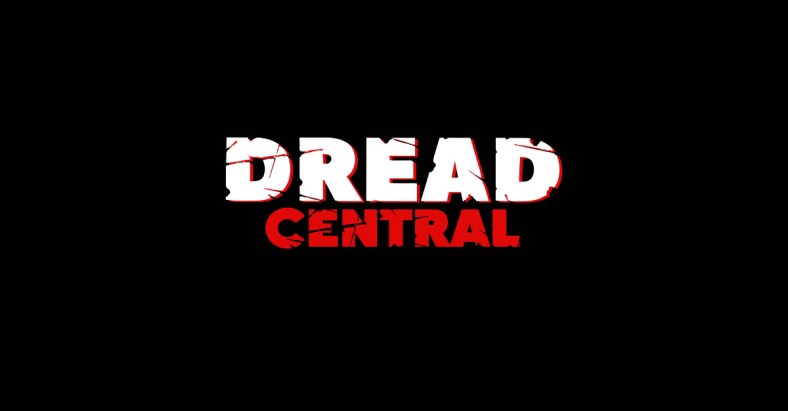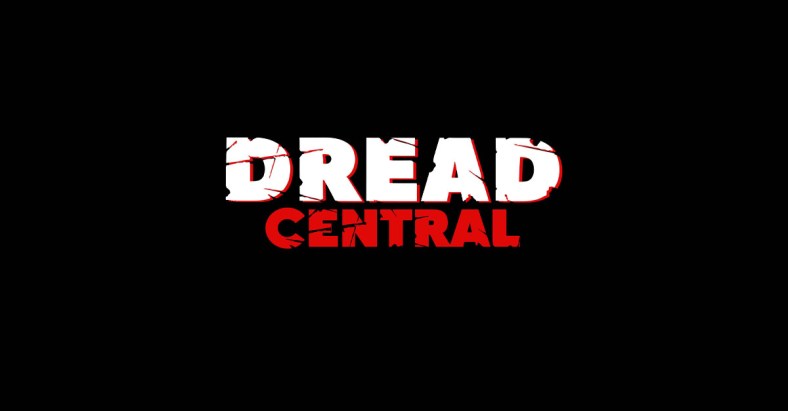Stephen King’s Current Upward Trend and a Look at Big Driver and A Good Marriage

What do Maximum Overdrive, The Lawnmower Man, Sleepwalkers, The Tommyknockers, The Mangler The Langoliers, Rose Red, Dreamcatcher, Desperation and Bag of Bones have in common? They’re all semi-charming, but ultimately disappointing adaptations of the great Stephen King’s work. None of the aforementioned pictures impressed on a substantial level, and a few of them bordered on downright miserable (here’s looking at you Bag of Bones and The Langoliers) offerings.
Having said that, every genius is subject to an abysmal transfer or so. And given King’s astonishing numbers of adaptations, it shouldn’t be a shocker to know that we may encounter a half dozen – or more – subpar offerings along the way. It happens.
What does matter is that we focus on the man’s stronger showings. And let’s all be honest, King has seen a tremendous number of his novels, novellas and shorts transformed into wildly entertaining pictures, be it for television or the big screen. It’s impossible to forget the impact of productions like Misery, Pet Sematary, Carrie, Apt Pupil, both Creepshow films, Silver Bullet, Stand By Me, The Shawshank Redemption, Salem’s Lot, The Shining, Cujo, The Night Flier, The Green Mile, 1408 or The Mist. They were all amazing films, crafted from riveting tales by the greatest living horror author today. The thing is, those successful film renditions have been scattered over numerous decades with plenty of disappointments sprinkled throughout.

But of important note, there’s a current King trend that indicates the man’s direct involvement with more productions is paying serious dividends (not that he needs any more). Mercy is a flawed, but engaging picture. CBS’s “Under the Dome” series started on a questionable note, but soon won viewers over with its claustrophobic atmosphere and diverse character lineup (Mike Vogel’s participation has proven quite the accelerant for this blossoming fire). An adaptation of Cell is on the way, and with Tod Williams (Paranormal Activity 2) behind the cameras and Samuel L. Jackson and John Cusack reuniting in front, there’s a wealth of promise in waiting. With fresh spins on “Mr. Mercedes”, “It”, and “11/22/63” on the way, things continue to look better than ever for Mr. King. And with recently released pictures A Good Marriage and Big Driver having earned some serious and very deserving praise, there’s a measure of assurance that King can become more than the master of fictionalized novels… he can also become the true king of the genre in film format. That’s evidenced by movies like Big Driver and A Good Marriage, two pictures that shove the gratuitous violence in the direction of the backburner, choosing to shine the spotlight on characterization first and foremost. And they truly, truly are quality films. Not only that, but again, they’re obvious indicators that King’s works are perhaps being treated with more respect than ever.
A Look at Big Driver
Some of Stephen King’s stories are clearly tailor-made for uncensored adaptations. At this point, we know that damn near everything the man writes will make it to screen, but there’s a time for some of those stories to work themselves to the small screen, and there’re times when some of these transfers really, really do require the censorship liberties of landing on the big screen, as close to uncensored as possible. While it was great to see Lifetime continue its goal of delivering edgier, darker material to network followers, Big Driver was a film that without doubt needed a bit more room to breathe. It shouldn’t have been a small screen production; it should have earned the big screen treatment because it has the potential to be a horrifyingly disturbing experience… if not for being confined to a constricting, politically correct box.
But don’t misconstrue that statement to the extent that it begs to be misconstrued. Big Driver is a pretty disconcerting picture and a treat to take in.
The story itself is actually somewhat simple by King’s standards. A revenge tale that pits an author who has been raped against the man – and his family – who raped her. What separates the film from others of similar ilk, however, is the multilayered narrative. Although Tess Thorne (Maria Bello), Lester Norvell, AKA “Big Driver” (Will Harris) and Ramona Norvell (Ann Dowd) serve as the primary players, there’s an unorthodox tactic employed by King and Richard Christian Matheson, who works the teleplay. The decision to turn a simple navigational tool into an influencing and supportive personality is basic genius. The same could be said of the figments that Tess summons in the form of characters from her own mystery novels. These are voices that viewers may not expect, and in many circumstances could offer little to the story. In the case of Big Driver, they provide a wealth of surprising depth and the decision to allow these personalities to physically manifest themselves, rather than exist as voices in Tess’ mind alone, is another wise approach from King.
Nonetheless, television limitations damage the production to a degree. If ever there were a reason to go big, bloody and ultra-violent, that reason rests within the story of Big Driver. Rape is an astoundingly offensive act, and although Lifetime pushed every limit possible, the impact of Tess’ violation could have been deeply heartbreaking as opposed to generally unsettling or off-putting. It’s a nauseating offense and viewers should be able to absorb it for what it is. Make no mistake, there’s no need to travel to the depths of depravity featured in pictures like I Spit on Your Grave, but what we see here is just a tad too… decent, for lack of a better term. And it should be noted, this here writer isn’t one who craves excessive sexual violence, but I’ll always be in favor of the truly petrifying and utterly mortifying… as long as the truly petrifying and mortifying can be executed with at least a strand of taste.

Now, Tess’ revenge on the other hand, does take longer strides to deliver the savagery fans may hope for. Eyeballs are blown from their sockets, genitals turned into bullet-ridden shreds. We witness a rather unforgiving impalement scene that culminates (in perfectly icy nature) in a remorseless headshot from a woman with rage burning inside, fueling her physical actions. There are jarring moments to behold throughout the flick, that cannot be refuted, they’re just not overtly graphic.
The truth is, none of the film is particularly vile on the visual end, but again that’s where the strength of intricate story manipulations comes into play, as it isn’t the aggression on display that’s going to win viewers over, it’s the atypical ideas put into motion. And Big Driver is certainly loaded with those ideas, and happily, they’re pretty well-executed. When it comes to TV transfers of King’s work, Big Driver impresses on numerous different levels. It’s no Salem’s Lot, but it’s a magnetic affair that boasts some great performances, great characters and a terrific pace.
A Look at A Good Marriage
While Big Driver doesn’t exactly leave every act of aggression to the imagination, A Good Marriage does. The content is every bit as dark, if not more so, but the heinous moments of A Good Marriage never transpire on screen. They’re constantly referenced by each of the two main characters, news breaks and random bit players; however, viewers are never privy to the visual shock of anything other than what looks to be a marriage that’s far too good to be true. And it (obviously) most certainly is.
Bob and Darcy Anderson (Joan Allen in a heartbreaking but amazing role) have been married for 25 years, and to those looking in from the outside it’s the ideal marriage. The two are successful. The two are in love. They’ve got some attractive, successful children who have taken out to the world to live their own lives. They run their own business which doesn’t seem to be hurting, and the passion they share for one another looks as alive as it possibly could be. That’s a beautiful, ideal scenario, but it shatters one evening when Darcy makes a grim discovery: the drivers license of a girl who’s gone missing, suspected to be another victim of what has become a symbol of fear, a prolific serial killer who goes by the alias “Beadie”. “Beadie” has been making a lot of noise in the public realm, as the hunt is frantic to bring to an end a madman’s reign of terror. But when Darcy is forced to either live with the fact that her husband is a homicidal madman or find a way out without becoming his next victim, the tension reaches fever pitch. See, Darcy is a good woman, and no good woman can stand by knowing that innocent women are being slaughtered by a man she thought she knew.

Everything about the picture is psychological, with each gruesome act left up to the mind of the viewer. But the emphasis on personalities and the dynamic between Bob and Darcy are highly compelling. In a sense it is, at times, hard to even dislike Bob. He (that’s Anthony LaPaglia for the record) plays the role of faithful, honest hubby quite well. But the dread of the story never subsides once Darcy learns the truth, and her internal war feels extraordinarily tangible. The pent-up frustration that Allen sells is captivating, and we’re in constant suspense as to what her next move may be. The pieces of the story fall together like a first-time skydiver and guide, and when the shit does finally hit the ground, it becomes a messy but rightfully rewarding image embedded in our minds.
A Good Marriage far surpasses expectations. There are no actual monsters, telekinetic teens, evil shapeshifting clowns or aliens determined to take over the world, but in this case it isn’t needed. Bob Anderson is his own brand of monster, and his often apathetic nature never allows us to forget how dangerous the man truly is. The fact that LaPaglia plays the character so well only adds to the shock of it all, as his work on camera is every bit as impacting as Allen’s. A wonderful suburban setting and a constant sense of community comfort amplify the effects of Bob’s savageness, and it isn’t lost on home audiences. Anticipate a picture more in line with works like The Night Flier or The Shining (they’re all completely different films, but at the heart lies obsession, deception and a quest to find the truth while surviving Hell) than Dreamcatcher or Pet Sematary.
The Upward Trend Continues
Outside of the recent Carrie remake, King’s recent adaptations have been growing in strength. It seems no matter the content, Hollywood and those chosen for the director’s chairs are grasping his works better than ever before (King’s own participation and more hands-on approach no doubt make a difference), and it’s paying off. With a quality show airing on television, unforgiving stories being picked up by networks like Lifetime and quiet but disconcerting works like A Good Marriage crawling from seemingly nowhere, there’s little doubt that – even after all of these years – King’s work is on an upward trend.
Categorized:Editorials News

